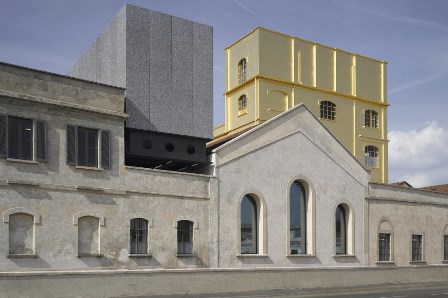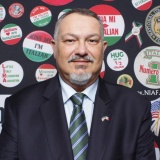
WTI Magazine #64 2015 July, 10
Author : Enrico de Iulis Translation by:
Fondazione Prada's big shot is having an unexpected domino effect not only on Milan and Expo, but also on a national scale, establishing new lines of museum design and construction. The headquarters, designed by Rem Koolhaas, reassesses a part of Milan virtually beyond any cultural interest, refitting the industrial zone adjacent to Piazzale Isarco in the southern part of Milan, and showing a good example of redevelopment of industrial archeology, which we hope can be doubled in Rome with the charge taken by the Dutch architect of the area of the former Mercati Generali.
The opening, simultaneous to the beginning of the EXPO, has actually kind of eclipsed attention to the Italian cultural proposals in the great world exhibition, making Fondazione Prada the true Italian pavilion of the event, also because of the sensational Light Bar designed by the Director Wes Anderson, who managed to bring the extravagant and colorful beauty of his films in this unique space.
And yet, the great success of the new center joins the existing headquarters of the Foundation in Venice, in the magnificent Palazzo Corner della Regina, which thus becomes the second pole of a cultural project they run on different but related very consistent philological proposals.
The proof is in the first exhibition of the Milan office, "Serial Classic": an exhibition on the reproducibility of the classic style to this day, their inheritance over time and the transformation of their meaning. This exhibition is associated with the one inaugurated at Palazzo Corner called "Portable Classic", within the 56th Biennale of Art in Venice.
Another nice intuition is to have assigned the curatorship of exhibitions to Salvatore Settis, perhaps the most qualified Italian professionals in this field, currently not much "exploited" by the Ministry of Culture.
This encouraging and supportive set of points of this new private expositive reality leads to a broad reflection about the possibility that private Foundations could organize very significant international exhibitions and philanthropic initiatives, incorporating public activities or even replacing them, using leading characters within the Italian art history.
This organizations are to be carefully explored because they could create collaboration scenarios even about important great works as underground excavations, unexpected archaeological finds, redevelopment of urban areas or restoration of paintings or other works of art that would not find the necessary funds in the public sector.
In addition, it is hoped that the Italian foundations who care about art would also understand the necessity to allocate investments for the formation of figures that nowadays in Italy are currently missing or tend to disappear for lack of funds or attention from the public sector: archivists, specialized restorers, researchers and museum manager.



